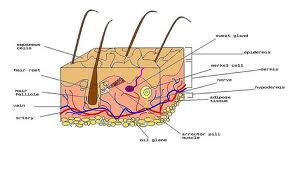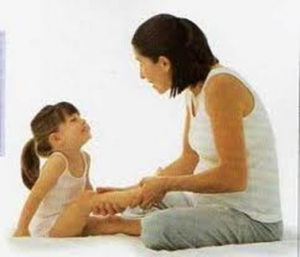As the holiday season is over and the dark evenings of winter upon us, I join most folks who enjoy hibernating at home whenever possible. Part of human hibernation includes coming home from work and changing into comfy cozy clothes…ahhhh. Our sense of touch is critical in helping us to feel calm and relaxed so snuggle up and enjoy the winter!
Brainwaves is a monthly newsletter designed to create some “brain waves” within my community of colleagues, friends and clients.
In the last issue, I wrote about the importance of our sense of touch which includes light touch, pain, pressure (skin and internal organs), and temperature. I noted that light touch can trigger a fight or flight reaction for some children. Occupational therapists (O.T.) describe this response as “disorganized” and may label it as “tactile defensiveness”. The sensory processing disorder website (www.sensory-processing-disorder.com) defines it as;
“Children who have tactile defensiveness are sensitive to touch sensations and can be easily overwhelmed by, and fearful of, ordinary daily experiences and activities.
Sensory defensiveness can prevent a child from play and interactions critical to learning and social interactions.”
O.T.’s call this “disorganized” because these ordinary daily touch experiences should not elicit so much discomfort and pain. It is believed that some parts of the touch experience (receptors, pathways, processing or interpreting) are confused or disorganized.
Science Daily reports on research that links a particular type of skin cell (Merkel cells) to our ability to detect fine details using our fingertips, lips and soles of our feet. These cells are lo cated just below the surface of the skin. What seems to be most fascinating in this discovery is that merkel cells (yellow circle in diagram) and the hair cells responsible for sound (hearing) detection in our auditory system (cochlea) come from the same gene and therefore the same embryonic tissue. Now, you may be asking “so what?” Well, this may explain why so many of the children that have tactile defensiveness also have sound or auditory defensiveness.
cated just below the surface of the skin. What seems to be most fascinating in this discovery is that merkel cells (yellow circle in diagram) and the hair cells responsible for sound (hearing) detection in our auditory system (cochlea) come from the same gene and therefore the same embryonic tissue. Now, you may be asking “so what?” Well, this may explain why so many of the children that have tactile defensiveness also have sound or auditory defensiveness.
We also know that children who are traumatized during early life experiences (neglect, abuse, chaotic home lives) can also experience touch and auditory sensitivity. This may be less related to genes and more related to early stressful life experiences that have sensitized their nervous system to be on guard. Dr. Bruce Perry, a psychiatrist and neuroscientist, talks about this in his books and articles. See www.childtrauma.org for more information.
So Now What?
In Issue 1, I spoke about how important it is to avoid using light touch with touch defensiveness children, teens or adults. One suggestion included massage, which uses the pressure touch pathway. An interesting September 2008 article entitled “Massage decreases aggression in preschool children: a long term study” came to the conclusion that “a daily touching massage lasting for 5 – 10 minutes could be an easy and inexpensive way to decrease aggression among preschool children.”
Here are a few suggestions:
- Give your child a short massage beginning with an area of the body that they chose. You can have them begin with their own hands and place your hands on top of theirs and just squeeze the limb. As they become more comfortable, you can use only your hands and add some hand movements.
- Add unscented lotion if your child can tolerate this. Scented lotion may also be useful for some children who are not smell defensive or allergic but should be chosen by the child. There are certain essential oils which can be added into lotions and are believed to have a calming effect on the nervous system (ie) lavender. Be sure to consult a certified aromatherapist.
- If possible, find a massage therapist that can work with you and your child to provide an occasional massage. Some therapists may come to your home as a way to develop a relationship. Beginning sessions may look very different from a typical massage session. For example, many children will be anxious and may need to just play a game with the therapist and you, or sit on your lap while the therapist massages their hands, arms or feet.
- Another form of calming pressure touch is a big hug or squeeze. Some children seek out this feeling when they crawl under or between big or heavy objects or when they wrap themselves up in a blanket.
Interesting
Science Daily article on Merkel cells: http://www.sciencedaily.com/releases/2009/06/090618143956.htm
Articles on massage therapy: http://www.ncbi.nlm.nih.gov/pubmed/19708471 http://www.peacefultouch.net/Resources/MassageDecreasesAggression.pdf
Workshops
Sensory Processing: Helping You Understand Your Child
Two evening sessions will provide information and practical strategies to help parents of children with sensory processing differences. Time will be spent going through each sensory system, assisting parents to create a sensory diet particular for their child, discussing uncertainty and realistic expectations within new environments.
Next session will be Wednesday, February 8 and 15, 2012. Call 254-3146 for more information.

